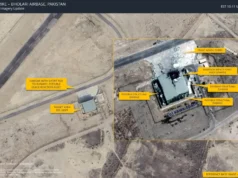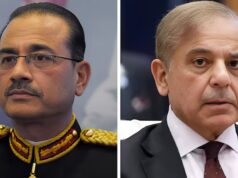What is India – UAE CEPA, how it will benefit both economies?
The agreement is set to benefit nearly 90 per cent of trade between the two countries
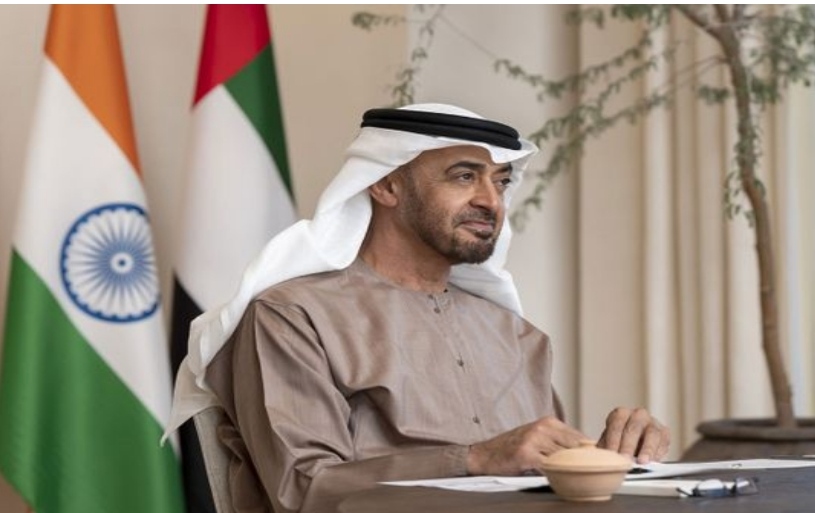
Sheikh Mohammed bin Zayed Al Nahyan, Crown Prince of Abu Dhabi and Deputy Supreme Commander of the UAE Armed Forces at a virtual summit with Indian Prime Minister Narendra Modi.Image Credit: WAM
India and the UAE on Friday signed a Comprehensive Economic Partnership Agreement (CEPA) that is set to benefit about 90 per cent of trade between the two countries.
The UAE-India CEPA is India’s first bilateral trade agreement in the Middle East and North Africa (Mena) region. The formal talks over CEPA started in September 2021. The trade deal between India and UAE bears significance as the top political leadership of the countries, Prime Minister Narendra Modi and Sheikh Mohammed Bin Zayed Al Nahyan, Crown Prince of Abu Dhabi and Deputy Supreme Commander of the UAE Armed Forces endorsed it and was signed by India’s Commerce Minister Piyush Goyal with UAE Economy Minister Abdulla bin Touq Al Marri, in New Delhi.
Safeguard against tariff surge
The trade deal has provided a permanent safeguard mechanism, which will protect exporters and businesses from both countries from any unwarranted surge in volumes of any particular product, Commerce and Industry Minister Piyush Goyal said.
Several sectors, such as gems and jewellery, leather, plastic products, agriculture products, medical devices, pharmaceutical products, and automobiles will benefit from the agreement. India has given duty concessions on gold exported from the UAE, while Indian exporters will attract zero per cent duty on jewellery.
But some products have been kept on the exclusion list for both countries. In some cases, duty on products will be reduced in a phased manner as the domestic industry said it needed time.
The trade pact will provide significant benefits to Indian and UAE businesses, including enhanced market access and reduced tariffs, an official statement said. It is expected that the CEPA will lead to an increase in bilateral trade from the current $60 billion to $100 billion in the next five years.
“The agreement will open up a lot of opportunities for our MSMEs and provide job opportunities to the tune of 1 million for our youth. It is a win-win for both economies and our people,” Goyal said.
India’s gold and jewellery sector as well as the pharmaceutical industry have emerged as major winners in the new deal struck by the UAE and India, which seeks to raise trade volumes between the countries to $100 billion. Apart from the trade aspect, the CEPA will free up investments – and create job opportunities – in key sectors.
In the gold and jewellery sector, India will benefit from easier access to the UAE, helped by changes to the customs duty. It will mean that India-made jewellery can be brought to the UAE at competitive rates. Currently, the UAE has an import duty of 5 per cent on these items.
On the pharma side, the UAE for the first time has agreed that medicine or medical products approved by developed countries will get market access and regulatory approval in a time-bound manner of 90 days for being marketed in the UAE.
India’s major exports to the UAE include petroleum products, precious metals, stones, gems and jewellery, minerals, food items — such as cereals, sugar, fruits and vegetables, tea, meat, and seafood — textiles, engineering and machinery products, and chemicals.
India’s top imports from the West Asian country are petroleum and petroleum products, precious metals, stones, gems and jewellery, minerals, chemicals, and wood and wood products.
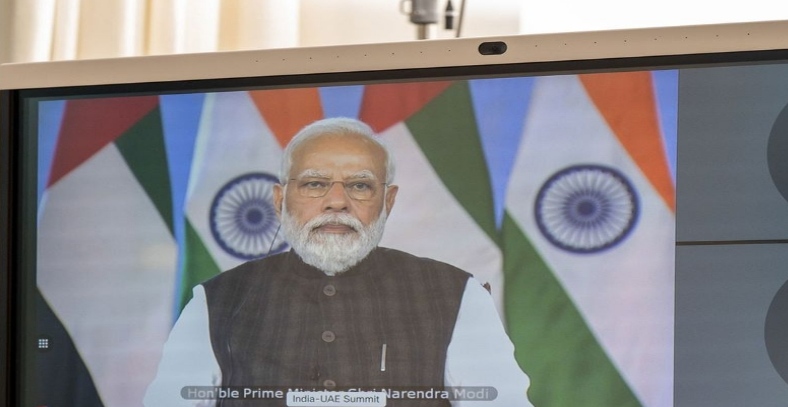
Terming the India-UAE Comprehensive Economic Partnership Agreement (CEPA) as a game-changer in economic ties, Prime Minister Narendra Modi said that deal will help enhance bilateral trade in goods to USD 100 billion and services to $15 billion in the next 5 years.
A new era of partnership
Going beyond the economic relations between the UAE and India the CEPA is expected to take the bilateral relations between the two countries to a new high.
Currently, UAE is India’s third-largest trading partner and second largest export destination. In the last financial year, the UAE was India’s third biggest export and import market with $60 billion in trade, behind the US ($67.4 billion) and China ($65.1 billion). India – UAE CEPA aspires to take bilateral trade to over $115 billion within five years.
Market access
For India, the CEPA agreement is expected to give market access to the entire West-Asia and Africa regions in sectors such as gems and jewellery, textiles, leather goods and software exports through UAE. In addition, the UAE’s advanced multimodal transport and logistics infrastructure can benefit Indian industry to use these as hubs for trade with Africa and Europe.
The agreement would entail the UAE with enhanced market access to India for its key exports such as petrochemicals, metals and dates. With India projected to become the world’s third-largest economy in the early part of the next decade, opportunities for UAE companies both in oil and non-oil business in the country are expected to grow exponentially over the next decade.
Investment flows
Recent years have also witnessed several major foreign direct investment partnerships between India and the UAE. In June 2020, for example, Mubadala invested $1.2 billion in India’s telecommunications provider Jio Platforms. While in 2019, UAE entities committed $7 billion to create a food corridor between the UAE and India. Meanwhile, India’s Reliance and Abu Dhabi’s Abu Dhabi Chemicals Derivatives Company (TA’ZIZ) recently announces the launch of a $2 billion chemical production partnership in Ruwais.
CEPA underpins the UAE’s bold economic path for the next five decades and falls under the umbrella of the country’s Projects of the 50 agenda – a comprehensive roadmap designed to double the economy. At a broader regional context, the CEPA could eventually become a template for the ongoing India – GCC free-trade agreement (FTA) negotiations.
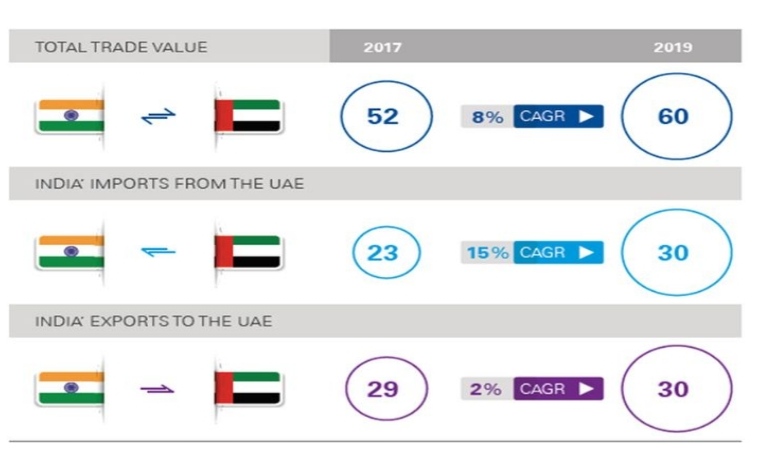
India UAE trade has witnessed strong growth in recent years. (All figures in billion US dollar)
INDIA – UAE TRADE POISED FOR A BIG SURGE: IBPC REPORT
Dubai: The Indian Business and Professional Council (IBPC), in cooperation with the Dubai Chamber of Commerce, has launched the India – UAE Bilateral Trade and Investment Report, which examines the state trade and investment relations between the two countries, as well as synergies and bilateral business opportunities across key sectors of mutual interest.
The report was unveiled during a meeting, attended by Hamad Buamim, President & CEO of Dubai Chambers; Suresh Kumar, Chairman of IBPC, and representatives from both organisations. During the meeting, the two parties discussed ways to expand UAE-India economic ties and work towards common goals.
“The report offers valuable insights that can be used as a guide for companies and investors who are keen to explore market opportunities,” said Buamim.
According to the report, foreign direct investment flows between the two countries is valued at over $57 billion over the 2003-2021 period, the report estimates. India’s FDI into the UAE represents approximately 54% of the cumulative bilateral FDI.
According to the UAE Embassy in India, the cumulative bilateral FDI stands at $67 billion. Conversely, the Indian Embassy in the UAE estimates that the UAE’s investments in India are about $17-18 billion, of which over $11 billion is in the form of FDI (2000-June 2021). The majority of India’s FDI has been in the coal, oil and gas and real estate sectors, while the UAE’s FDI has primarily flowed into real estate and ceramics and glass.
Aside from FDI, there has also been considerable investment by companies owned or operated by Indians based in the UAE. The UAE is home to over 3.4 million Indians, the largest expatriate community in the country. It is estimated that local investments by non-resident Indians in the UAE amount to about $55 billion, with investments estimated at $8-9 billion by the 70 richest Indians based in the UAE.
The report also highlights investment opportunities in various economic sectors, specifically in advanced technologies, precious stones and jewellery, infrastructure development, oil and gas, renewable energy, markets, financial services, education, technology, emerging projects, food security, pharmaceuticals and medical equipment.
A joint vision statement outlines a roadmap for a brighter future
The UAE and India on Friday unveiled a joint vision statement during the virtual summit between His Highness Sheikh Mohamed bin Zayed Al Nahyan, Crown Prince of Abu Dhabi and Deputy Supreme Commander of the UAE Armed Forces, and Narendra Modi, Prime Minister of India.
The Joint UAE – India Vision Statement is a roadmap aimed at ensuring both countries work together more closely to address the shared global challenges, achieve shared objectives and build a robust and resilient relationship that is future-ready. The Roadmap will promote the development of new trade, investment, and innovation dynamics, and intensify bilateral engagement in diverse areas.
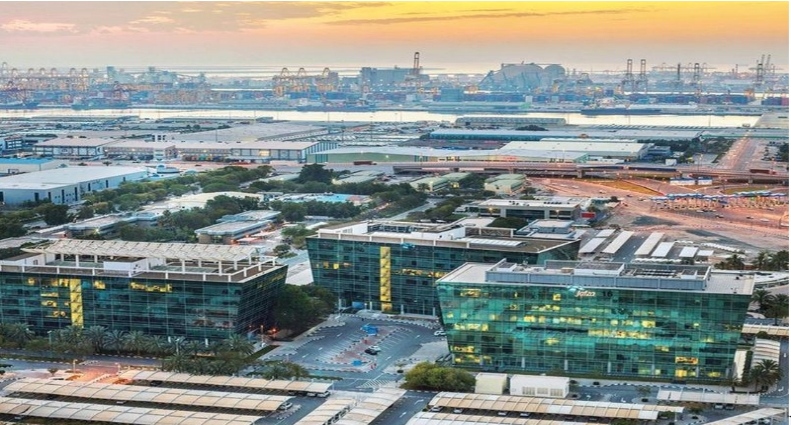
Following the signing of the CEPA leadership of both countries welcomed the establishment of a dedicated India Mart in Jebel Ali Free Zone.
Economic partnership
Acknowledging the economic synergies and shared vision, the leaders welcomed the signing of the India-UAE Comprehensive Economic Partnership Agreement and expressed confidence that this agreement will usher in stronger economic relations between the two countries and open new avenues for trade and investment. The leaders welcomed the establishment of a dedicated India Mart in Jebel Ali Free Zone and directed their respective officials to further promote two-way investments in infrastructure projects, including expediting work on establishing a dedicated investment zone for UAE companies and joint ventures which would focus on inter alia establishing a food corridor.
Additionally, the leaders encouraged to create investment opportunities for Indian investors in establishing specialised industrial advanced technology zones in the Emirate of Abu Dhabi, integrating local value chains of the existing and future specialised economic zones in areas of logistics and services, pharmaceuticals, medical devices, agriculture, agri-tech, steel and aluminium.
Cultural cooperation
Recognising shared cultural heritage and strong ties rooted in history, the leaders agreed to set up an India UAE Cultural Council to facilitate and promote cross-cultural exchanges, cultural projects, exhibitions and dialogue between thought leaders of the two countries. The initiative will be coordinated by the Office of Public and Cultural Diplomacy, Ministry of Foreign Affairs and International Cooperation, UAE, and the Indian Council for Cultural Relations (ICCR).
Energy partnership
Over the last fifty years, the energy sector has been one of the key pillars that have enabled a special and mutually beneficial relationship between the UAE and India. Today, India is one of the UAE’s most important energy trading partners.
Strategic ties between the two nations have strengthened in recent years, particularly in the field of energy. Through the Comprehensive Strategic Partnership, both countries have promoted and delivered significant investment opportunities. The UAE is one of India’s key energy providers and remains committed to meeting India’s growing energy demand and is proud to have been the first international partner to invest by way of crude oil in India’s Strategic Petroleum Reserves Program. Indian companies have steadily increased their participation across the entire UAE’s energy sector and represent some of Abu Dhabi’s key concession and exploration partners.
Climate action and renewables.
Recognising the imperative need for climate action, the leaders agreed to strengthen cooperation towards accelerating climate action to facilitate the energy transition and implementation of the Paris Agreement. The leaders also agreed to work closely in the contexts of COP, the International Renewable Energy Agency (IRENA), and the International Solar Alliance (ISA).
Recognising that climate action will bring significant opportunities for societies, for economic growth, and for businesses, the leaders agreed to support each other’s clean energy missions.
Hydrogen Task force
As part of the roadmap, India and UAE have agreed to establish a joint Hydrogen Task Force to help scale up technologies, with a special focus on the production of Green Hydrogen. The leaders acknowledged ongoing UAE investments in India’s clean technology programs and initiatives and called for reinforcement of business-to-business and public-private partnerships.
Emerging technologies
Recognising that the rapidly digitalizing world offers immense opportunities to accelerate economic growth and human development as well as to create new investment opportunities, the leaders agreed that the UAE and India expand cooperation and collaborate on critical technologies and mutually promote e-businesses and e-payment solutions.
Acknowledging the rapid success of start-ups in India and the UAE in recent years, the leaders agreed to collaborate to promote start-ups from both countries to expand into the two regions and utilize such platforms as the basis for growth. The start-ups could focus on, inter alia, fintech, edu-tech, healthcare, logistics and supply chain, agri-tech, chip design and green energy. The leaders directed their officials to explore mechanisms and sectors to promote collaboration.
Skills cooperation
Both India and the UAE agreed to enhance their cooperation in order to develop a mutually agreed professional standards and skills framework. The two parties agreed to closely work together to ensure that the UAE labour market skill needs from India are met by ensuring workforce access to training programs that are in alignment with the market needs and address the changing needs for the future of work.

In a vision statement following the signing of CEPA, leaders both countries agreed to expand cooperation through enhanced bilateral food and agriculture trade and responsible foreign investments in agriculture and food systems.
Food security
Acknowledging India’s and the UAE’s historic strategic partnership in the field of food security and the need to enhance the resilience and reliability of food supply chains, the leaders agreed to expand cooperation through enhanced bilateral food and agriculture trade and responsible foreign investments in agriculture and food systems. They agreed that India and UAE will contribute to promoting and strengthening the infrastructure and dedicated logistic services connecting farms to ports to final destinations in the UAE.
Health cooperation
Emphasising the need for close collaboration among countries to deal with the pandemic and to promote overall public health, the leaders recognised the role played by India and the UAE, in providing vaccines to the world. It was agreed to collaborate in the research, production and development of reliable supply chains for vaccines and to enhance investments by UAE entities in the rapidly growing health infrastructure in India.
Education
Realizing the need to establish world-class institutions that encourage and support innovation and technological progress, an Indian Institute of Technology will open in the UAE.
Cooperation in the international arena
Reflecting shared values and principles, and growing strategic convergence, the leaders resolved to reinforce mutual support in multilateral areas to promote collaboration in economic and infrastructure spheres. With the UAE being a non-permanent member of the United Nations Security Council for 2022-23, Modi congratulated His Highness Sheikh Mohamed for the UAE joining the United Nations Security Council as a non-permanent member for 2022-23 and assured full support. His Highness Sheikh Mohamed congratulated Prime Minister Modi for India’s Presidency of G-20 in 2023.
Defence and security
The leaders agreed to enhance maritime cooperation contributing to the maintenance of peace and security in the region. The Leaders agreed to continue defence exchanges, sharing of experiences, training and capacity building.
Discussing regional issues, the leaders recalled the importance of maintaining and strengthening peace in the Middle East. They reiterated that dialogue and cooperation must be the cornerstone of a more integrated, stable and prosperous region, and India welcomed the outlook of the UAE in this respect. The leaders agreed to support international efforts to maintain peace and security in the region and resolve regional conflicts, including efforts to support the reactivation of the Middle East Peace Process in line with the two-state solution and based on the relevant United Nations Security Council resolutions and previous agreements between the parties. They expressed hope that the Abraham Accords will contribute to regional peace and create positive change for the Middle East region.
The leaders reaffirmed their joint commitment to the fight against extremism and terrorism, including cross-border terrorism, in all forms, at both regional and international levels. They agreed to deepen their bilateral cooperation in the fight against terrorism, terrorist financing and extremism. In this context, they emphasized the importance of promoting the values of peace, moderation, coexistence and tolerance among peoples, and stressed the need for all forms of terrorism, extremism, violence, hatred, discrimination and incitement to be renounced.
In view of the recent terror attacks against the UAE, Prime Minister Modi reiterated India’s full solidarity with the leadership, government and people of the UAE and offered condolences to the UAE over the victims of this cowardly terrorist act.”
CEPA to increase non-oil trade with India by 120 per cent: Al Zeyoudi
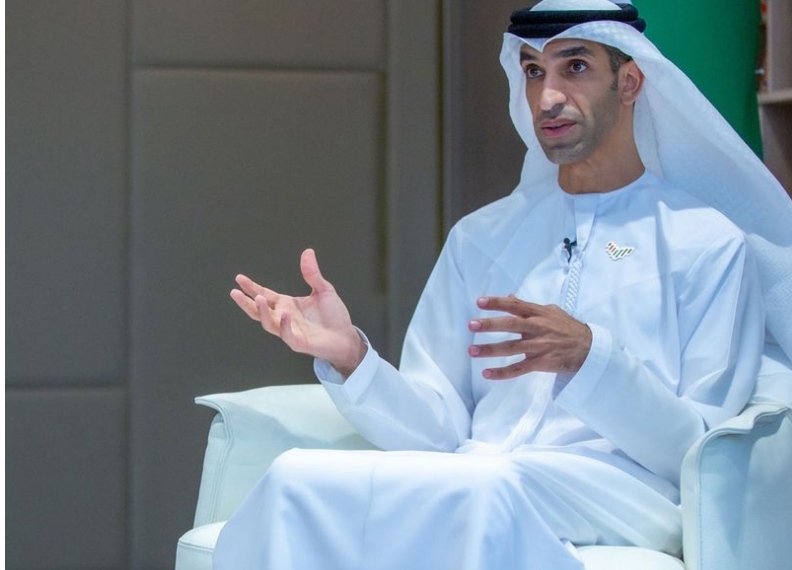
Dr. Thani bin Ahmed Al Zeyoudi, Minister of State for Foreign Trade, said that the Comprehensive Economic Partnership Agreement (CEPA) signed by the UAE and India will increase trade exchange by 120 per cent in five years
In an exclusive interview with WAM, Dr. Thani bin Ahmed Al Zeyoudi, Minister of State for Foreign Trade, said that the Comprehensive Economic Partnership Agreement (CEPA) signed by the UAE and India will increase trade exchange by 120 per cent to $100 billion in five years, compared to the current trade exchange amounting to $45 billion.
CEPA will achieve growth in the national economy by 1.7 per cent in 10 years with a value of $9 billion. It will increase exports by 1.5 per cent, equivalent to $7 billion, and imports by 3.9 per cent, equivalent to $14 billion, and create around 140,000 new high-skilled job opportunities in the UAE.
What are the new areas of cooperation?
This agreement will achieve significant economic benefits for both countries through education, the cancellation of customs tariffs, facilitating access to markets, and providing opportunities in vital sectors such as aviation, environment, hospitality, logistics, investment, building and construction, financial services and digital trade.
What is the size of the non-oil trade exchange between the UAE and India?
The size of the non-oil trade exchange between the UAE and India amounted to nearly $45 billion at the end of 2021, an increase of 60 percent compared to 2020, and 8 percent compared to 2019. India is the top trade partner for the UAE in terms of non-oil exports, as they amount to 14 percent of the total exports of the UAE to the world.
What are the most exchanged commodities between the two sides?
The primary exchange commodities include gold, diamonds, ornaments and jewellery, machinery, electrical appliances and parts, petroleum oils, plastics and their products, and metals including iron, steel and aluminium.
India and the UAE account for over 16 per cent of the global trade in diamonds, gold, and jewellery. Some 20 per cent of the gold trade in both countries is accounted for by either country, which means that 20 per cent of India’s gold trade is with the UAE, and 20 per cent of the UAE’s gold trade is with India. Moreover, 3 per cent of UAE ‘s commodities trade in relation to COVID-19 is with India.
India is among the 15 top exporters of food commodities globally and the UAE is among the top recipients of its exports from this commodity group, as it accounts for over 5 per cent of its total exports to the world, after America and China.
India comes in second place in terms of the total UAE trade of food products, while India is among the top supplies of food products in the Emirati market, accounting for 10 per cent of the UAE’s food imports.
What are the target sectors in both countries?
CEPA strengthens access to markets and targets new investments in key sectors including energy, environment and digital trade. The agreement also provides new growth opportunities for the petrochemicals sector in the UAE. CEPA also allows access to government contracts in the government sector purchase markets in both countries.
The agreement provides frameworks for protecting intellectual property rights, including in new areas like genetic resources for food and agriculture. It also encourages cooperation in intellectual property issues related to SMEs, sciences, technology, innovation and technologies inventions.
CEPA covers 11 service sectors and over 100 sub-sectors, which include business services (professional services, accounting, real estate, and advertising, among others), telecom, construction services, educational, financial and insurance, social and health services, travel and tourism, entertainment, cultural and sports, and transport.
What are the main features of the UAE-India partnership?
CEPA motivates commercial flows between the two markets by removing tariffs on nearly 80 percent of goods, which will contribute to accelerating non-oil trade between them from $45 billion in 2021 to $100 billion in five years.
What is the relative importance of India to the Emirati economy?
India is the top trade partner for the UAE in terms of non-oil exports, accounting for 14 percent of the total exports of the UAE to the world, while the UAE is the third trade partner for India, accounting for 40 percent of its trade with Arab countries. CEPA is expected to contribute to accelerating non-oil trade between the two countries to amount to $100 billion in five years.


